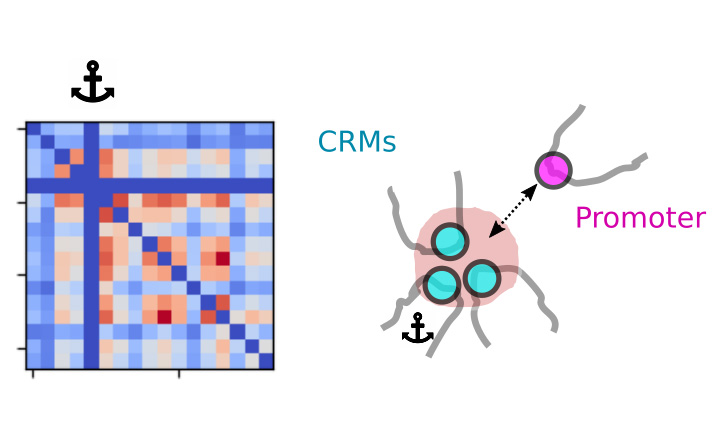Cis-regulatory chromatin loops arise before TADs and gene activation, and are independent of cell fate during development
Sergio Martin Espinola, Markus Götz, Jean-Bernard Fiche, Maelle Bellec, Christophe Houbron, Andrés M. Cardozo Gizzi, Mounia Lagha, Marcelo Nollmann
During development, naïve cells gradually acquire distinct cell fates, through sophisticated mechanisms of precise spatio-temporal gene regulation. Acquisition of cell fate is thought to rely on the specific interaction of remote *cis*-regulatory modules (e.g. enhancers, silencers) (CRM) and target promoters. However, the precise interplay between chromatin structure and gene expression is still unclear, particularly in single cells within multicellular developing organisms. Here we employ Hi-M, a single-cell spatial genomics approach, to systematically detect CRM-promoter looping interactions within topological associating domains (TADs) during *Drosophila* development. By comparing *cis*-regulatory loops in alternate cell types, we show that physical proximity does not necessarily instruct transcriptional states. Moreover, multi-way analyses revealed the existence of local interactions between multiple remote CRMs to form hubs. We found that loops and CRM hubs are established early during development, prior to the emergence of TADs. Moreover, CRM hubs are formed via the action of the pioneer transcription factor Zelda and precede transcriptional activation. Our approach offers a new perspective on the role of CRM-promoter interactions in defining transcriptional activation and repression states, as well as distinct cell types.
https://www.nature.com/articles/s41588-021-00816-z


